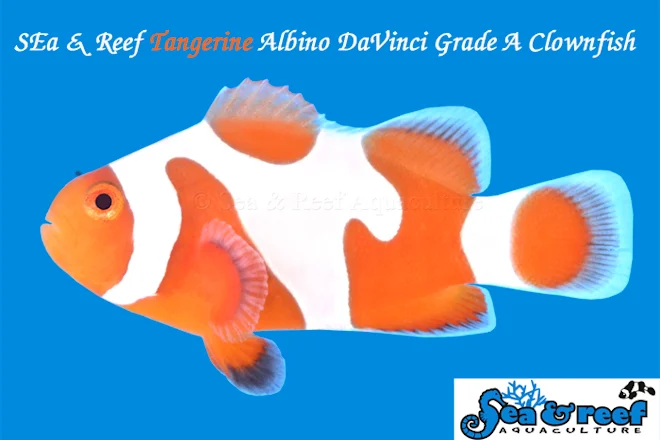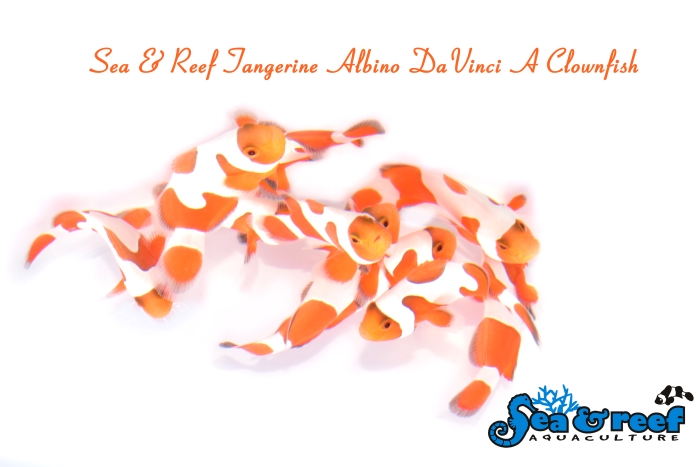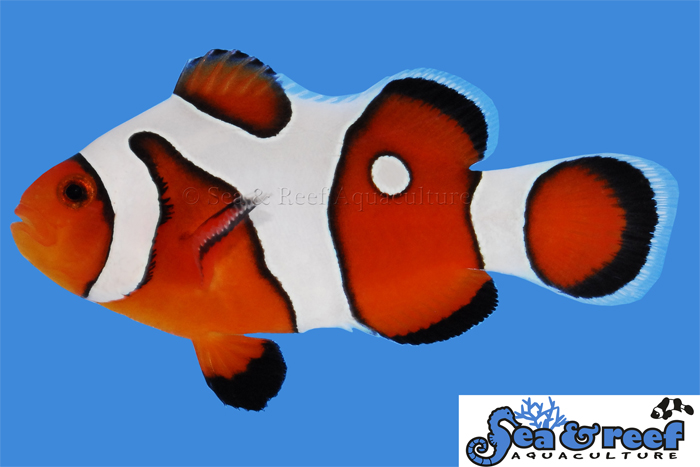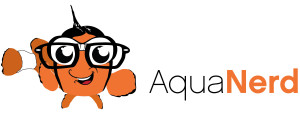
Last month Sea & Reef released a new captive bred designer (January 2023), which is an exclusive designer clownfish that as far as we know, has never been seen before. The new strain is only available through Sea & Reef’s dealer network which includes our online and walk-in business, Aquarium Specialty.

The greatly reduced black pigment makes them very distinct from the regular DaVinci Clownfish. The reduced pigment give the fins a smoky appearance. Also, the lack of black pigment between the white body and the intense orange face presents a clean and distinct look.
Through selective breeding Sea & Reef has introduced the Tangerine Albino mutation to their DaVinci Clownfish that have been available for several years. The Tangerine mutation is considered albino because they are hypomelanistic, meaning there is a considerable reduction or lack of black pigment in the fish. Tangerine albinism is expressed as a lack of black pigment between the white body of the fish and the orange face coloration. The black pigment is also strongly reduced on the fishes fins. The fact that some black pigment is still visible in the fins and eyes would suggest that the mutation did not destroy the melanin synthesis pathway completely. Nevertheless, the Tangerine Albino DaVinci Grade A Clownfish is considered an albino clownfish.
Temperament and Captive Care
The temperament and captive care requirements for Tangerine Albino DaVinci Grade A Clownfish is very similar to that of the regular Ocellaris clownfish. It is relatively peaceful and hardy and it can live in captivity for a decade or more. To date, the oldest Sea & Reef clownfish we have had lived with us for about 17 years. These fish will thrive in saltwater aquariums with or without an anemone present and often you will see them hosting in certain corals if an anemone is not present.
Feeding
Most clownfish are omnivorous feeders, meaning that they will consume a variety of different food types including meaty foods and algae based foods. In nature the diet of clownfish consists of crustaceans (such as copepods and amphipods), algae, polychaete worms and leftovers from the a host anemone’s meal. These clownfish are also know to share food to their host directly. Sea & Reefs captive bred fish are conditioned to eat a variety of aquarium diets including pellets, flake food, frozen Mysis shrimp, and frozen brine shrimp and often they will eat dried Nori that is so commonly used for feeding a variety of our aquarium fish.
Aquarium Host Anemones
The Tangerine Albino DaVinci Grade A Ocellaris Clownfish will readily accept a wide variety of host anemones and many hobbyists keep them with the popular and hardy Bubble Tip Anemone (Entacmaea quadricolor). As a reference the natural host anemones of the regular ocellaris clownfish are Magnificent Sea Anemone (Heteractis magnifica), Giant Carpet Sea Anemone (Stichodactyla gigantean) and Merten’s Carpet Sea Anemone (Stichodactyla mertensii).

Standard A Grade DaVinci Clownfish


